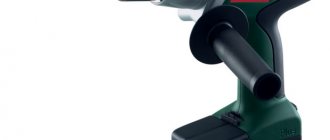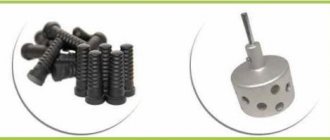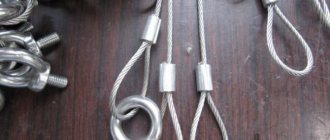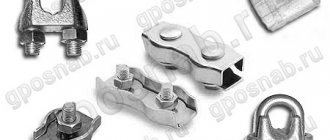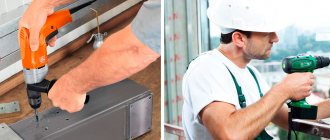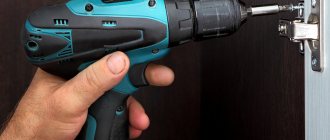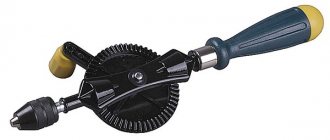What is an impact and non-impact drill?
Hammer drill. This is a power tool that is designed for drilling holes in wood and metal. At the same time, it works in two modes: drilling and drilling with impact (hence the name of the drill).
Hammerless drill. It's just an ordinary drill. Designed for drilling holes in fragile surfaces: wood, plywood and plastic.
Differences between impact and non-impact drills
Impact and non-impact drills differ primarily in the type of application:
a) material processing. As already mentioned, an impact drill is used on wood and metal, but a regular drill is used on wood, plywood and plastic. However, with more powerful characteristics, ordinary drills are sometimes used, both on brick and concrete.
b) impact mechanism. This mechanism (back and forth movement) is present only in impact drills, rather than in conventional ones. As a result, the hammerless drill is light in weight.
In second place are the differences in the characteristics of these two instruments:
Power. Typically, impact drills, due to their back-and-forth motion feature, have higher power compared to a regular drill.
The power range in a conventional drill is from 300 – 600 W.
The power range in an impact drill is from 500 – 1200 W.
Rotational speed. The torque in impact drills is faster than that of conventional drills.
Weight and dimensions. A regular drill is lighter than an impact drill.
Cartridge type. This characteristic varies among the drills under consideration. Conventional drills mainly use a keyless chuck, while impact drills use a serrated or key chuck.
Cartridge. a device necessary for fixing drills and other types of drill bits. There are different types of cartridges:
- The quick-clamp is intended for heavy loads and hard materials, for beginners when working with a drill.
- A hexagon bit is used for various types of drills.
- Toothed or key. chuck with jaw clamp for professional work.
Final differences between impact and non-impact drills:
Price. The cost of an impact drill is higher than the cost of a non-impact drill, since the functionality of the first is much richer than the functionality of the second.
Quality. The same can be said about quality. Analyzing the main differences, we can conclude that since a conventional drill is lighter than an impact drill, it means that it is usually made worse, which explains its short period of operation.
High torque
Pictured: AEG cordless screwdriver BSS 18C LI.
Not to be confused with torque.
In the technical data sheet of a screwdriver or impact wrench you will see incredible numbers: 100, 150, 180 N*m. And if this is a very powerful cordless impact wrench, then we are talking about hundreds of “newtons”. There are no errors here, you just need to know that the tightening torque of the fasteners is given, and not the torque that the gearbox develops. Those “unrealistically” high Newton meters are not the result of a gigantic effort applied, but only a consequence of a series of blows on the edges or slots.
What is the difference between a screwdriver, an impact screwdriver, a drill-driver, an impact drill-driver, and an impact driver?
kitchen maker and it's not there
Read it. But I didn’t find an answer to my question there.
I’ll answer my own question a little.
- A drill-driver has a quick-release chuck, a screwdriver has a hexagonal hole for a bit, and a wrench has a four-sided head for a socket wrench.
- The drill/driver just turns; The impact screwdriver tightens the screw to a certain force, and then tightens the screw by rotating with an axial impact. 3. An impact drill/driver (in impact mode) constantly turns with an impact, unlike an impact screwdriver, which only turns with an impact.
- Impact screwdrivers do not have a torque limiting clutch or a two-speed gearbox.
- For a screwdriver, the tightening torque is limited by the torque limiting clutch, and for an impact screwdriver, it is limited by the duration of impact on the screw/screw (I have a hard time understanding how this happens, I read it on another forum).
- From the above we can conclude that you cannot drill a hole with an impact screwdriver.
The tools are all different and I would like to figure out what’s what and confirm my assumptions.
Greater twisting force with simultaneously less pressure on the tool by the operator.
the force for tightening screws or nuts is not applied continuously, but in a high-frequency series of small blows, as if you had put an open-end wrench on the nut and started tapping it with a hammer. The total force applied is calculated as the sum of the forces of these blows per unit time.
Based on this, we can immediately highlight the advantages and disadvantages of instruments of this class.
Advantages of impact screwdrivers (wrenches)
- High torque! For most battery models, the torque range lies between 80 and 250 Nm!
- Convenient for tightening nuts. At low loads, the tool operates in a non-impact mode with continuous force (quickly tightens the nut along a loose thread), and when the resistance increases, it switches to impact mode (tightening with a high torque).
- There is no need to apply a large pressing force to the tool when tightening screws and self-tapping screws, thereby saving the caps from “licking”. You can also use it to unscrew those screws and self-tapping screws whose heads have already begun to lift up.
- Reduces torque load on the operator's wrist.
Disadvantages of impact screwdrivers (wrenches)
- Low drilling speed when switching to impact mode.
- Inapplicability of jaw chucks (hexagons only) with rare exceptions.
- The inapplicability of the torque limiting clutch, due to which the tightening process has to be controlled independently all the time, which is not always convenient at high rotation speeds of the tool shaft.
- Increased noise in shock mode.
Difference between an impact drill and a hammer drill
In addition to the drills discussed above, hammer drills are widely popular. This tool is often confused with an impact drill, so you should remember their fundamental differences:
a) appointment. The use of an impact drill is limited to working with brick and concrete. In turn, the hammer drill can easily drill through concrete and natural stone.
b) function. The function, which refers to the impact function, is different for these devices. For a drill, this is drilling, and for a hammer drill, it is impact. This difference is confirmed by the implementation of device functions. The hammer drill is equipped with a special electromechanical mechanism built into it, while the drill uses two gears to strike.
In conclusion, I would like to say the following: before thinking about which of the presented drills is better or what is the difference between them, it is necessary to analyze the scope of application of each drill and its features. After all, even a single model, for example, an impact drill, has its own characteristic subtleties and differences.
Which is better - a hammer drill or an impact drill?
Knowing how a hammer drill and an impact drill work, the difference between them becomes obvious. Due to its design features, the drill has a low impact impulse. When working with very hard materials, the kickback has a significant impact on the ratchet teeth, causing them to heat up and accelerate wear. Due to wear, the impact pulse becomes even weaker over time, until impact drilling becomes completely impossible. The hammer drill is not subject to this, since the pneumatic chuck compensates for recoil, eliminating the destructive effect on the impact mechanism.
Hammer drills have another drawback: their large dimensions make drilling work more difficult and require more strength from the worker. A drill weighing 1.5-2 kg is much more convenient to hold than a 4-5 kg hammer drill. And this tool consumes more electricity (per unit of time).
Even knowing the pros and cons, deciding which is better - a hammer drill or an impact drill is quite difficult. In fact, the question itself in this form is incorrect and is a classic example of an “elephant versus a whale.” If you have to choose between a hammer drill or an impact drill , which one to prefer depends only on the specific conditions of use. Just as a bus is good for transporting people, and it is more convenient to transport crushed stone on a dump truck, so these tools are each good at what they do.
Drill
Why does this tool exist? Even an almost ignorant person knows that a drill exists to drill holes in almost all materials. These holes can be either small, the size of a drill, or very impressive, which are made using a Forstner drill or even a crown.
With the help of attachments, the drill can be turned into a grinder. You can also use a drill as a construction mixer and mix paint, tile adhesive or something else with it. Well, or at worst, the drill into the kitchen and use it as a mixer that has fallen into disrepair.
By the way, the big advantage of the drill is that on most modern models, you can adjust the speed of rotation of the drill and this makes the tool universal; it can drill wood, metal or concrete.
The impact deserves special mention . Of course, a tool with such a function costs a little more, but it completely pays for itself in everyday life. After all, if you drill a wall, then the impact mechanism allows you to do it many times faster and without titanic efforts (those who drilled concrete without an impact mechanism will understand me).
READ Impact drill as a mixer
Difference in operating modes
The hammer drill has three operating modes:
- chiselling,
- drilling,
- hammer drilling.
The first mode turns the hammer drill into a jackhammer, which allows you to chisel walls, dismantle old tiles and plaster, tap a gutter for wiring, and much more. Impact drilling allows you to make huge holes, for example, for air conditioning mounts. No drill with impact mode is capable of this.
The drill has only two modes:
- drilling,
- hammer drilling.
Expert opinion
Roman Vasiliev
Builder, repairman
But can a hammer drill completely replace a drill if it has more modes? Theoretically it can, but in practice everything is much more complicated.
Firstly, drills and hammer drills have different chuck rotation speeds. If a drill, for example, Makita HP1640, has a drill rotation speed of 2800 rpm, then a hammer drill has 1000 rpm or even less. Such low speeds may simply not be enough to properly drill sheet metal. But it’s quite enough for drilling wood.
Don't miss: Impact drill or hammer drill - what to choose for your home
Secondly, the hammer drill chuck is not rigidly fixed to the axis of the device, so there will be a slight play during drilling. And if you use an adapter, the play will be even greater. Because of this, there is a possibility of damaging the material that we are drilling. That is why it is necessary to use a hammer drill for drilling only when the beating of the drill does not damage the workpiece material or the drill itself. For the same reason, we recommend using large drills with a hammer drill to drill small holes in metal, wood bits and other large-sized bits. But drills thinner than 8 mm must be used with caution, as they can easily break due to play and runout.
Thirdly, most drills for wood and metal have round or hexagonal shanks, which simply will not clamp into the hammer drill chuck. For them you need to use a jaw chuck or an adapter (see figure), which must be purchased separately. However, with an adapter, the drill runout increases slightly.
As you can see, an impact drill and a hammer drill are not interchangeable devices. Each is used for a specific purpose. In some cases, you can compensate for the absence of one by working the other, for example, using a drill with a Pobedit drill bit to drill a couple of holes in concrete (do not buy a hammer drill for two holes). However, for constant work “on the profile” you need an appropriate tool.
Main purpose of tools
The main difference between an impact drill and a hammer drill is their functional purpose:
- for an impact drill - this is drilling materials of low density (wood, plastic, soft metals, etc.). In addition, the impact functions of the drill allow you to drill even concrete and brick. In conventional models, the working effect produced largely depends on the pressure force of the master. Therefore, to obtain optimal and acceptable impact energy, the pressing force should reach 10-15 kg;
- for a hammer drill it is chiselling. The impact function is inherent in the hammer drill from the very beginning, just like drilling. At the same time, it is not recommended to apply pressure to the hammer drill, as this may lead to breakage of the tool. The maximum limit of pressing force should be no more than 5 kg.
Depending on the general functions, a hammer drill can perform a fairly wide range of work compared to the functionality of an impact drill:
- beating work and driving in rods;
- chipping concrete walls;
- drilling of various surfaces, including wood, concrete and steel;
- chipping, chipping bricks, knocking down tiles, removing plaster and making holes;
- driving bolts, screws or self-tapping screws
FAQ
What is the difference between a drill and a hammer drill and a screwdriver? These tools, despite all their similarities, have different purposes and devices. The hammer drill is designed primarily to make holes in concrete, stone and brick, so it can drill, but its main mode of operation is high-energy impact, up to 20 joules. A drill, even an impact drill, is not designed to hammer: its job is to drill, and the impact function, even if it exists, does not reach the level of a hammer drill. Finally, a screwdriver works with fasteners and is not required to make holes in anything at all. Based on this difference in the main tasks, one can easily trace the differences in the design of these devices and in the working tools they use: say, a hammer drill needs drills and strobers, drills need drills, and a screwdriver needs bits...
How to unscrew a drill chuck without a key? You can use two screwdrivers: a Phillips screwdriver and a flat-head screwdriver. The first one needs to be inserted into the key hole in the cartridge, and the second one must be used as a lever and use it to turn the cartridge, resting the tip against one of the teeth. Instead of a Phillips screwdriver, you can use something else: a nail, for example, or a drill.
Distinctive characteristics
Like any other construction tool, an impact drill and hammer drill have a number of distinctive features:
- Impact mechanism
The instruments have different striking mechanisms:
- The hammer drill has an electropneumatic and electromechanical impact mechanism unit. It produces impact force and provides the most effective performance parameters of this type of construction tool. In the electromechanical type, two coils cause the core to move under the influence of electromagnetic influence. The pneumatic mechanism involves transmitting working energy through a rotating rotor driving a piston. Due to the reciprocating amplitude of the drill, the hammer drill does not require additional physical activity or effort, unlike an impact drill;
- the drill has a more simplified design of the impact mechanism. It often consists of two ratchets that connect to a rotating chuck and the body of the tool.
The existing differences in the design of the impact mechanisms of a drill and a hammer drill determine their different technical and operational standards.
- Operating modes (or functionality)
Modern types of rotary hammers are significantly ahead of the drill, since they have three full operating modes:
- single-mode or drilling - the device uses only rotation without using impacts;
- three-mode - impacts without rotation (they are also called work in jackhammer mode);
- dual-mode (rotations with impacts) - perform drilling in combination with impacts.
Thanks to these three modes, the hammer drill can be used not only for drilling, but also for other types of work - chopping off excess material, gouging out grooves or niches in stone walls.
The drill will not be able to provide a high level of speed, because its impact function is just one of the additions to the main one.
Drills have only two modes and are available in several varieties:
- Due to its versatility and with additional tools, an impact drill can perform the functions of a mixer, grinder, hammer drill and screwdriver. Conventional drills allow you to drill holes in wood and metal products. They also have a subtype called “angle drills” - they make holes in hard-to-reach places;
- drill mixers – have an elongated additional handle and high torque. Used for preparing a variety of building mixtures;
- impact - in their design they can combine the functions of drilling and impact. With their help you can drill brick and concrete;
- drills and screwdrivers - in addition to their main function, they can drive or remove screws.
- Total weight of the power tool
Depending on their weight, rotary hammers are classified as:
- lightweight - the weight of the structure reaches 2-4 kg;
- medium – within 5 kg;
- heavy – weight exceeds 5 kg.
The average weight of an impact drill can range from 1 kg to 4 kg.
A hammer drill and an impact drill differ in the number of parts used and the methods of attaching them:
- For drilling in a hammer drill, drills with pobedite surfacing are most often used. The most vulnerable part of the tool is the ratchet. Therefore, when choosing a drill, you should take into account that under heavy loads and severe vibration they wear out very quickly;
- In addition to drills, rotary hammers also use drills, which are secured in chucks using a special system of clamps and specially shaped grooves
Having a certain degree of freedom in the movements of the drills in the chuck, the impact load in the hammer is significantly reduced.
The diameter of the chucks determines the possibility of using small or large drills.
Unlike , the hammer drill contains a special adapter that allows you to change cartridges if necessary.
Another positive point when choosing a hammer drill is the impact of a lower level of vibration on the master’s hands due to the softening air cushion located in the pneumatic impact mechanism.
- Performance
Determined by the impact energy value. For a rotary hammer it ranges from 1.5-20 J and is always an order of magnitude higher than for an impact drill. This largely depends on the mass of the device and the pressure force of the master. The technical characteristics of rotary hammers may also indicate the frequency of blows per minute: from 4 to 4.5 thousand blows in more powerful models and 2-3 thousand in less powerful ones.
Taking into account the same power of tools, a hammer drill is always significantly more expensive compared to the price of an impact drill. However, we should not forget that a hammer drill belongs to the category of professional tools, so its cost is fully justified - drilling speed and durability.
Remember that when working with a hammer drill you need to apply three times less effort than when using an impact drill
Impact mechanism design
The difference between the functions of a drill and a hammer drill became the main difference for the creation of their impact devices.
In a rotary hammer, such a mechanism is a rather complex unit, which is designed in both electro-pneumatic and electro-mechanical variations. Basically, the electro-pneumatic unit is more popular because it has better performance characteristics. Rotational motion in electric motors is achieved through crank devices or spherically swinging bearings in piston activity with a reciprocating nature. The interram and piston space is subjected to compression types of influence, which leads to acceleration of the piston, which, through the impactor, redirects the resulting energy to the elements of the device: drills, crowns, chisels, drills.
When the impact mode is turned off, the ratchets do not interact with each other, since a stopper is placed between them. Turning on shock mode pushes it back. When the drill is pressed onto the surface being processed, the ratchet interacts and slippage between them is observed. Axial reciprocating activity occurs in the drilling fixture and chuck.
The difference in indicators and characteristics between a hammer drill and an impact drill lies in the structural difference between their impact mechanisms.
Impact drill or hammer drill - what to choose
To decide whether you need an impact drill or a hammer drill, it’s worth giving examples for each tool.
- Rare need for drilling. If you rarely need to drill holes, there is no point in overpaying for a hammer drill. To hang a shelf, drill a hole for a bolt in a metal part, etc. - An impact drill is quite enough. A drill also takes up less space in a closet or on the mezzanine than a hammer drill.
- Working with wood and metal. Any drill can drill wood, even a Chinese one for 300 hryvnia. In order to make a hole in an aluminum or iron part, a powerful blow is also unnecessary (a high-quality drill is much more important). And when working with cast iron and high-carbon steel, impact is generally contraindicated, since these alloys tend to split from impact.
- Tightening screws, bolts, nuts. With a drill with a power of 500-700 W (with the impact mechanism disabled), it is quite possible to screw a self-tapping screw into a board. The installed head turns the tool into a wrench for working with bolts and nuts. The only thing is that it is important to choose the right speed and stop in time (so as not to break the thread or head). With a heavy and powerful hammer drill this is very difficult, and even with proper skill, the percentage of defects will be high.
- No need to drill into hard materials. If you live in a house with walls made of foam block (or other soft material), and the need for drilling stone, brick, concrete is unlikely to arise, then a hammer drill will not be useful in the household.
READ DIY diamond drill dust extractor
Application of rotary hammers
This tool is simply created for breaking hard rock materials. It can be used when:
- Punching holes in concrete or brick surfaces;
- Knocking down plaster or tiles;
- Splitting of durable surfaces;
- Making grooves on the walls.
Basically, all work is carried out using drills, peaks and chisels, and not a drill, as is the case with a drill. In this case, the main emphasis is placed on the percussion functions of the instrument.
Such a device will allow you to chisel hard materials successfully for a long time, achieving the required results. The power of the hammer drill is designed specifically for these purposes. But they will never be able to make neat holes in a metal or wooden surface.
Tool selection criteria
When choosing a power tool, you should pay attention to the following criteria:
- Power - the higher the power level, the more comfortable it is to use the tool at work.
- Availability of rotation speed adjustment.
- Equipped with additional attachments.
- Number of revolutions at idle (rotation speed).
- Volume of speeds (one, two, three, etc.).
- Possibility of movement (rotation) in both directions (reverse movement). In some cases, this helps remove a stuck drill bit.
- Possibility of creating holes of different diameters in different building materials.
Operating principle of an impact drill
In addition to the usual torque, the motor of an impact drill also gives the chuck and drill a reciprocating motion. Thanks to this, the working edge of the drill splits the material at the point of contact, and through rotation, removes its broken parts and removes them from the working area.
Drilling is much more efficient, but this requires special drills with carbide tips. For example, the Pobeditovs. They do not have cutting edges in the classical sense, but resemble the head of a chisel. Only a pointed shape.
The design of an impact drill is more complex than that of a conventional drill. But not so much as to radically increase its cost. On the axis of the cartridge there is a wheel - a ratchet. On the body there is a working stop tooth. When the ratchet is blocked (normal drilling mode), only torque from the gearbox is transmitted to the shaft.
Working in this mode is no different from a conventional electric drill. When the master switches the impact drill to the “drilling - chiselling” mode, the ratchet engages with the stop, and the shaft vibrates along the axis. The gear wheel seems to keep sliding off the stop.
In this case, the drill literally bites into the material. To reduce wear, the impact mechanism only works when the drill is pressed in the direction of drilling. During idle rotation, the shaft operates without vibration.
The operating principle of the impact mechanism of an electric drill
- Due to the constant friction of the ratchet against the stop, wear of the mechanism occurs very intensively;
- Undamped vibrations gradually destroy the body of the impact drill;
The rotor and stator of the electric motor also experience parasitic vibrations, which also has a detrimental effect on the service life of the tool.
Sharp shaking negatively affects the operator’s hands, increasing fatigue;
The joints begin to ache from constant work in the “drilling and chiseling” mode.
- The force and amplitude of the reciprocating movements are small, so such a drill is not suitable for materials that are too strong and hard;
- Such a mechanism cannot provide the “chipping” mode without shaft rotation;
- The ratchet requires regular maintenance and lubrication.
How to choose?
When choosing a specific impact screwdriver model, pay attention to the smallest details. The first thing people usually pay attention to is the type of food. Pneumatic models are definitely not needed at home, but electric ones can be mains or battery-powered, as mentioned above.
The network option is good for working in an equipped room; it is most valued for its almost unlimited power. Having given preference to such a device, evaluate its cable - it should have a significant length and thickness, have good insulation and not raise doubts about the strength of the place where it enters the unit.
In the case of the battery model, there are more selection criteria. First of all, you need to find a balance between the large capacity of the battery, which extends the battery life, and the weight of the device, because a capacious battery always weighs quite a lot.
Another point is the choice of battery type: today the most common are lithium-ion models, but nickel-cadmium models are also found. The first ones are good because they have a small mass with a significant capacity; they allow charging at any time, but they are more expensive than their main competitor and can quickly wear out at low temperatures. The advantages of the nickel-cadmium solution completely offset the disadvantages of the lithium-ion version - such a battery is cheaper and is not afraid of frost, but it is also heavy and environmentally hazardous, and most importantly, it must be completely discharged and then fully charged, otherwise the “memory effect” will cause rapid wear of the media .
Batteries can produce different voltages, but for periodic household work, you can choose models with a value in the range of 12-18 V.
At high voltage, the engine power also increases, but for home use you don’t need sky-high performance: 500-700 W is enough, otherwise the tool will turn out to be heavy and unreasonably expensive.
The screwdriver chucks in which the replaceable attachments are mounted can be quick-clamping or key-type. The first can be organized in different ways, but its advantage is that maintenance can be done with bare hands. The key cartridge has a characteristic rim; servicing it requires a special key, which is not always convenient.
Since we are talking about the cartridge, an important criterion is the maximum diameter of its opening - the larger it is, the more different attachments you can use.
Maximum torque is an indicator of how hard the attachment will rotate. This indicator does not always directly depend on the power of the motor; sometimes it can be increased due to the gearbox, but it is always desirable that the maximum torque be quite high. Models with continuously adjustable torque are preferred, since they are more gentle on fasteners and surfaces being drilled.
The last, but very important criterion for choosing a tool is its weight. Unfortunately, it is impossible to create a lightweight, and at the same time powerful and multifunctional device, so you need to decide what is more important: lightness or performance. Please note that with constant daily work, the first factor may be much more important.
Operating rules
Before starting work, be sure to read the instructions. It describes all possible modes of using the tool. Remember to follow safety precautions:
- Setting the maximum torque increases the risk of injury.
- Do not change settings while the chuck is rotating. All changes are made before turning on the device.
- Keep track of continuous operation time. Severe overheating of working elements leads to rapid wear.
- Do not touch the working parts immediately after turning off the tool.
- Do not use the device for other purposes.
- When working, be sure to use protective glasses and gloves.
How is each of these tools different from the others?
The purpose of any drilling device is obvious. Make holes in various materials. Depending on the characteristics of the workpiece, drilling requires a certain amount of energy. Different types of drills make the operator's job easier, but there are more advanced ways to improve the tool's efficiency.
For example, to impart forward vibrations to the nozzle. Then the drill acts as a chisel or bolt. Moreover, with a classic drill, even with diamond coating, it is impossible to drill a hole in reinforced concrete in a short time and with one copy of the attachment.
READ Drill Makita Or Bosch Which is Better
Instead of an epilogue
An analysis of the market for the equipment in question has established that its entire segments are predominantly occupied by foreign-made models. Even the most budget models are able to provide the potential buyer with relatively wide functionality at a fairly affordable price. The abundance of model possibilities simply cannot be taken into account - it is easy to find models with a limited option and completely professional ones. Naturally, Western European and transatlantic brands are more represented in the premium segment. Thus, the quality of all models discussed in the above rating is confirmed by at least ten positive reviews from customers for each position.
What is the difference between a drill and a hammer drill?
A rotary hammer works on the same principle as an impact drill, only the chiselling mechanism is implemented differently. In this case, it is the impact energy that is used, taking into account the mass and inertia of the impact mechanism. The force is realized using compressed air - like in a jackhammer. Actually, the “jackhammer” mode is provided in any hammer drill, regardless of size.
In this video, the master talks with examples about the main differences between a hammer drill and a drill.
The principle of operation is as follows: The shaft with the chuck and the working attachment (chisel or drill) is struck by a striker connected to a ram. The ram receives energy from compressed air, which appears from the work of the piston. The piston is driven by a crank mechanism or an oscillating bearing.
Schematic representation of the impact mechanism of a rotary hammer
The impact mechanism of the hammer drill works with great force and amplitude. The air acting as a damper extends the life of the power tool and protects the operator’s hands. At the same time, the operating efficiency is an order of magnitude higher than that of an impact drill. Durability is also excellent.
In this video you will find a comprehensive answer to the question: What is the difference between a drill and a hammer drill. The comparative review covers the following points:
- Visual comparison of a hammer drill and an impact drill;
- Fastening the drill and the drill (the difference is in the chucks);
- Tool power and performance;
- Ease of use.
What is the difference between household and professional tools?
Sometimes making the right choice is quite difficult: there are different models on the shelves for home and professional use. Impact drills for home use have more beautiful designs and various improvements that protect the ergonomics of the tool.
Working with such a tool is easy and pleasant, but many home craftsmen are primarily interested in technical characteristics rather than appearance.
The main difference between a drill for the home is that it works occasionally, and not constantly. Models for technical applications are distinguished by greater power and dimensions, since they are designed for huge and daily loads. Therefore, they are distinguished by a modified design: the gearbox is enclosed in a steel case made of hardened steel, and better cooling of internal parts is used.
The electric motor is protected from dust, because a professional tool is used in any environment: drafty interiors of buildings under construction or dusty basements where electrical wiring and other modifications need to be done.
A professional impact drill is a very powerful, high-quality tool with increased reliability of all parts; it is designed for long-term use in any, even the most unfavorable conditions.
In order to choose an excellent and reliable tool for home or professional work, you must adhere to the principle - the best impact drill has the highest technical performance in its class. The main thing is to remember to thoroughly check the impact drill before paying; you should not skimp on quality, because you will be purchasing a tool for long-term use.
What is the difference between an impact drill and a hammerless drill?
When choosing a household power tool, we are often guided by emotions rather than common sense. Mistakenly believing that “you can never have too many good tools,” amateur craftsmen purchase bulky and expensive instruments to perform simple household work.
The miser pays twice or even three times
In order not to shoot sparrows with a cannon, let's consider the most popular device - an electric drill and its functional varieties:
- The drill is simple;
- Hammer drill ;
- Hammer.
An impact electric drill looks very similar to a non-impact drill.
What is it and what is it for?
An impact screwdriver is a special power tool that allows you to most effectively drill into walls for the purpose of screwing in screws and installing other fasteners. Unlike , this relative novelty on the domestic market makes a hole not only due to the actual rotation, but also with the help of directed impacts. The latter usually do not have a permanent nature - the corresponding mode is turned on at the operator’s request or automatically if the drill encounters an obstacle of particular hardness. In a sense, it's a little jackhammer.
An impact screwdriver is a device in itself that is more complex and “smart,” so a certain versatility should not be surprising. This means that the tool, as a rule, is fully compatible with various attachments, due to which the scope of its potential application expands significantly - instead of a drill, you can attach, for example, a hole saw or a mixing attachment.
It is necessary to distinguish between an impact screwdriver and the same drill. The latter, being oriented towards making holes, assumes a longitudinal direction of blows, while a screwdriver strikes as if longitudinally, due to which it significantly increases the torque.
It is logical that such a tool costs slightly more than non-impact models, but its purchase is often justified even at home - the external, load-bearing walls of multi-story buildings are usually distinguished by their highest strength, which only an impact screwdriver .
The device is also appreciated by professionals who drill walls or various parts every day - according to them, with all its assertiveness, an impact screwdriver drill usually does not cause significant damage to fastener elements, increasing their durability. This characteristic is especially valuable in the context that the same tool is often used to assemble furniture.
The classification of impact screwdrivers is not so extensive, but is still capable of driving many inexperienced consumers into a dead end. What is most confusing is the logic in dividing tools into drills, screwdrivers and screwdrivers, but in reality everything here is extremely simple: the mechanism is generally the same for all, and the exact name depends on the attachment.
Thus, a drill is usually equipped with a drill for making holes, and a screwdriver and screwdriver can also screw in fasteners. Some models require simple replacement of attachments, so they may have complex compound names like “screwdriver-drill,” but if such multifunctionality is not provided, the unit is called the most accurate term.
Often, when choosing, beginners are also confused by the fact that the device is supposedly electric and pneumatic. Electric models are the most common, especially at home, but pneumatic ones are perhaps very rare models that will definitely not be in demand at home; their main places of use are various service stations and tire shops.
IMPACT DRILL OR PUNCHER | WHAT'S BETTER?
Since the screwdriver runs on electricity, it should be noted that it can be either mains or battery-powered. The first is good for minor home repairs or daily work in a well-equipped workshop, because it is lighter and the technician does not need to constantly remember to charge the battery.
However, it is the battery version that is the only solution during the construction process or for outdoor use, when the work site does not require the presence of functioning outlets.
How does a simple drill work?
The electric motor, using a gearbox, transmits torque to the chuck and then to the drill. The operator creates pressure in the direction of drilling, the drill with its working edges cuts the material layer by layer, going deeper into the hole. This rule works when the material is relatively soft and pliable.
So to speak, if there is something to “cut off”. Otherwise, the operator may not have enough strength for forward movement. This is the main difference between a conventional drill and an impact drill. The indisputable advantage is ease of use and the ability to perform work with high precision.
Hammerless electric drill with speed switching function
The presence of a speed controller adds versatility in terms of drilling various soft and fusible materials.
Sources:
https://1msk.su/populyarnye-stati/chem-otlichaetsya-udarnaya-drel-ot-bezudarnoj-perforator-s-vertikalnym-raspolozheniem-dvigatelya.html https://crast.ru/instrumenty/chem-otlichaetsja-udarnaja -drel-ot-bezudarnoj
